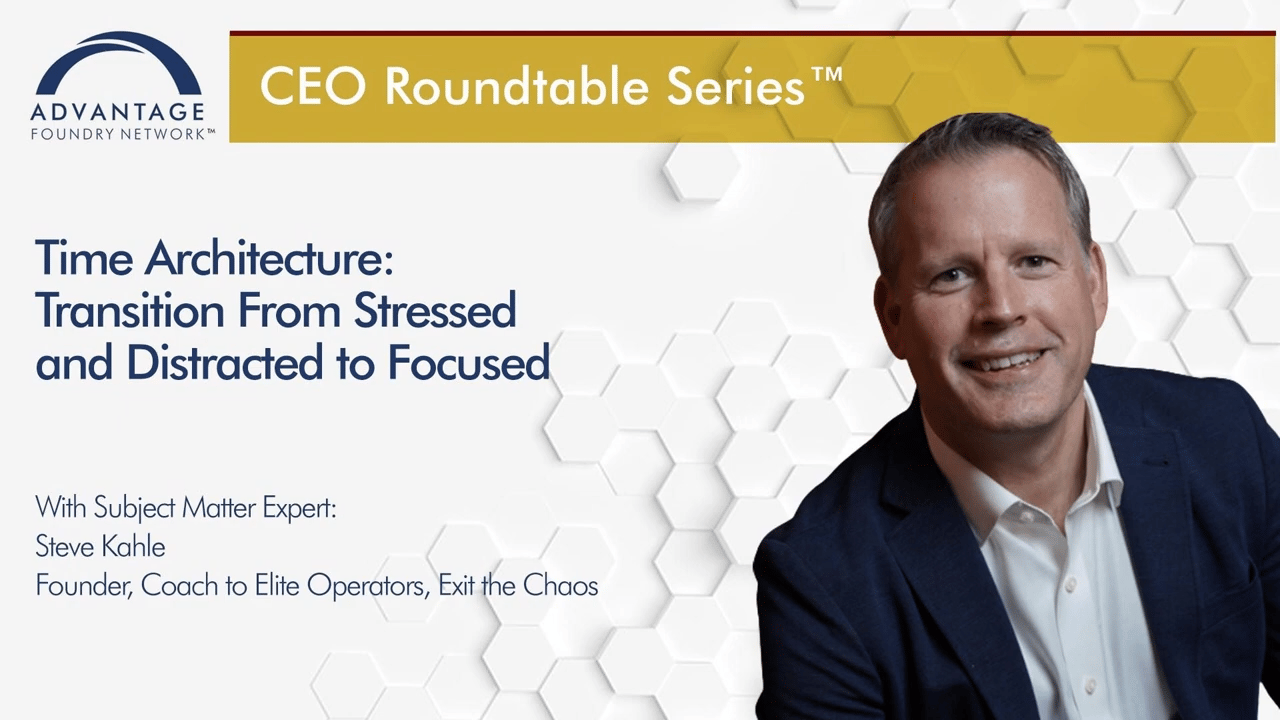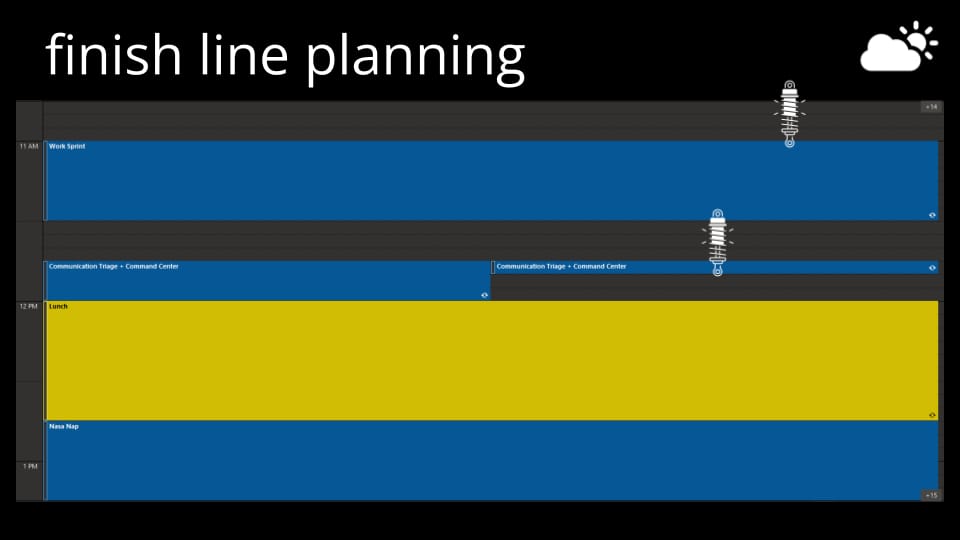- The Elite Operators Report
- Posts
- Behind the Curtain Questions from ‘Time Architecture: Transition From Stressed and Distracted to Focused’
Behind the Curtain Questions from ‘Time Architecture: Transition From Stressed and Distracted to Focused’
Bottom Line Upfront: Five smart follow-up questions (and answers) to my Time Architecture presentation to a group of high-performing leaders and operators.

📋 Overview:
It was an honor presenting to Advantage Foundry Network, led by Matt Sitter. The video presentation to this group of leaders is available, but the separate Q&A section was not recorded. Read a summary of the Q&A below.
First, here is some feedback from the recorded presentation…
What the Participants Said:
“(Presented tactics) …really helpful to think about as a leader…”
“Brilliant, thank you so much…”
“Steve, this was great. I do think that everyone got a ton out of it.”
“Setting aside time for a Communication Sprint to start my day, and then again to start my afternoon, makes me feel as if I am giving myself permission to ignore my inboxes and phone. Coupling this with dedicated Work Sprints makes me feel as if I have "stolen" some time back that was usually consumed with the switching costs of jumping back and forth throughout the day.”
Q1: How do you engineer flexibility in your calendar to accommodate your Communication and Work Sprints?
As an operator, the no-cost Ideal Recurring Week Mini-Course is a foundational exercise that clarifies and helps you visualize your time commitments.
As you build out your recurring Communication Sprints and Work Sprints, the key is to build in enough gaps between your calendar events - what I call ‘Time Shock Absorbers.’
Depending on how much control you have over your schedule, Time Shock Absorbers, or the time in between your calendar events, should be around 15-30 minutes, as seen below:

Overall, you want to avoid back-to-back calendar events where possible to allow for needed flexibility.
Q2: How, as a leader, do you best get buy-in from colleagues and change an organizational culture around time management practices?
As an operational leader, when dealing with change management, the fastest path is to win the hearts and minds of the team by framing how any change will benefit them and the organization.
Strive for alignment and 60% or higher buy-in by instituting a 90-day trial run with the team. Whoever owns the change during this period is the champion and the ‘Chief Reminder Officer,’ ensuring the change stays top of mind. If successful after 90 days, the change is operationalized in the organization’s playbook for reference and training new team members.
Q3: What are your thoughts on open versus busy calendar views?
As operators, we architect a culture that maximizes ‘Deep Thinking Work Sprints.’ To avoid unnecessary interruptions, the power move is to train team members to check calendars first. Context is key, so a team member opening a fellow team member’s calendar before interruption will give important cues.
For example, if the team member who needs something can see that the person they need is in the middle of a Deep Thinking Work Sprint, they can choose other asynchronous means if the need isn’t urgent - for example, sending an email instead. Note that with an open calendar view compared to just showing ‘busy,’ team members can mark any calendar event as private (for their eyes only), like a doctor’s appointment.
Q4: How do you plan your week ahead that correlates with your top priorities?
As part of my RPM Operating system (Roadmap Priority Machine), I created, teach, and utilize what I call a ‘Command Center.’ A leading Goal/Mission/Task platform allows operators to ruthlessly prioritize and visualize all their work. Their Command Center naturally drives their top quarterly, weekly, and daily priorities, driving what time is funded within calendar Work Sprints.
I have a dedicated Command Center Masterclass, which is part of the Productivity Accelerator.
Q5: Any final words of wisdom, Steve?
Per this CNBC article, Microsoft discovered large productivity gains by reducing the standard 60-minute meetings to 30 minutes in their Japanese offices.
Also, using a ‘Desired Meeting Outcome’ followed by a concise agenda is a battle-tested way to reduce meeting time significantly.
Understanding the negative consequences of snowballing ‘Meeting Debt,’ the key is to defensively block time after every meeting so you can clear all Meeting Debt and fully finish the meeting.
⬆️ Mindset Shift:
Based on the Q&A, as operators, we need to remind ourselves of the importance of being effective change agents. Constructively, we need to be Chief Reminder Officers to operationalize what brings improvement and needs to become part of the operating rhythm. We must also be Chief Culture Architects looking for ways to improve and reinforce our work cultures. Finally, we need to be Chief Productivity Officers, ensuring, as a team, we are doing the right tasks in the right order at the right time to get the right results.
⚡Operational Action:
Consider ▶️ watching the original recording that preceded the Q&A session and reply with your questions. I also recommend implementing one presented idea in your organization as a 90-day experiment.
💡What Do You Think?
What stood out most to you? If you have a question or comment, reply. I read every one.
🛠️ Tools Mentioned:
No tools were directly mentioned, although Microsoft 365 or Google Workspace can elegantly handle everything mentioned.
☁️ AI Content Disclaimer:
This content is 100% human-created. Bard and ChatGPT, though, helped determine which title was most persuasive.
✅ Mind Break:
Since you made it this far, to wrap up on an unrelated delightful note, did you see this short and wonderful video of people skating on a ‘see-through’ lake in Alaska? Amazing.
🔵 P.S.
P.S. If you find value, please share my content with others, which is a great way to help me build a growing community of elite operators. Also, check out my no-cost resources, like the Ideal Recurring Week Mini-Course. You can also apply for my next Productivity Accelerator, become a paid subscriber, or recommend me for executive coaching, operational and technology consulting, or speaking opportunities like this interview called Time Architecture, Transition from Stressed, and Distracted to Focused.
You can also contact me directly on LinkedIn or through this contact form.
Reply